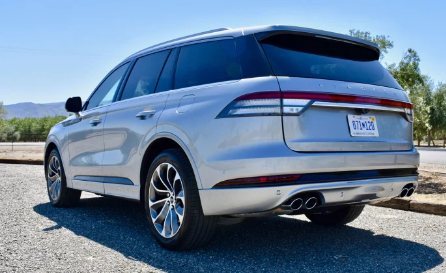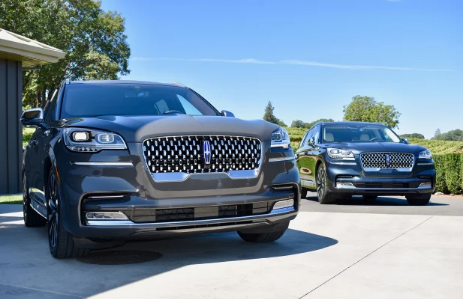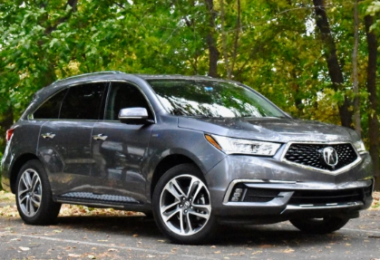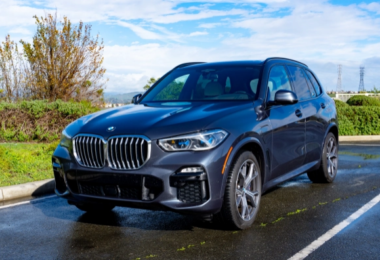The TWA Hotel is one of the most sought-after tickets in New York City. It is a temple to the heyday of aviation and is housed in the former TWA Flight Center at JFK Airport, complete with a Lockheed Constellation airplane parked out back. A 1960s Lincoln Continental was parked in front during a recent visit, and it fit in perfectly. Lincoln enjoyed its greatest popularity during the 1950s and 1960s, similar to the aviation business, but has since lost most of its attractiveness.

Therefore, it seems sense that Lincoln is making a comeback with the Aviator. A three-row midsize luxury SUV, the 2020 Lincoln Aviator is intended to compete with models like the Volvo XC90 and Audi Q7. But it’s also the new face of Lincoln, attempting to entice customers with a unique look and personality as well as a host of cutting-edge technological capabilities.
The 2020 Aviator will be offered with both gasoline and plug-in hybrid powertrains when it goes on sale later this year. We spent time in both during our test drive across the Napa Valley in California. The basic price of the Aviator is $52,195, but our test vehicles were significantly more expensive. Our Grand Touring plug-in hybrid was priced at $83,670, while the gasoline-powered Black Label model we drove retails for $81,790 (both prices include a required $1,095 destination fee).
Thin fuselage
It’s apt that the new Aviator shares a fundamental platform with the revamped 2020 Ford Explorer because Lincoln first used the Aviator brand on a rebadged version of the Ford Explorer in the early 2000s. Rear-wheel drive on the new platform gives designers more enticing proportions to work with and got us excited about the potential handling advantages (more on that later).
Speaking of design, Lincoln put a lot of effort into setting the Aviator apart from its Ford Explorer cousin and the majority of other SUVs in its class. Although the Aviator isn’t just a box on wheels, Lincoln’s design team didn’t tinker too much with the conventional SUV shape that customers expect. The Aviator has a sleek appearance thanks to features like the low overhangs, the way the hood and headlights curve away from the upright grille, and how the body tapers from front to back. The grille is a reasonable size, unlike those on many modern cars. Restrained chrome trim adds just the right amount of glitz to allude to vintage American cars from the 1950s and 1960s. The Aviator is not only attractive but also reminiscent of its brand and country of origin, much like the Volvo XC90.
Some of the bigger sibling Lincoln Navigator’s more distinguishing elements have been imported into the interior. Lincoln has come up with the ideal solution while rivals spend time with electronic shifters that resemble arcade game joysticks: piano-key-like buttons that are simple to use and are hidden away on the dashboard. Additionally, the Aviator has 30-way “Perfect Position” seats similar to those found in the Navigator and Continental sedan. Finding the ideal position took some time because there was so much adjustment, but once we found, the seats were incredibly comfy. Additionally, the seats offer a massaging feature with a variety of settings. Although the inside of our Black Label test car impressed us, we thought lower trim levels represented a significant decline.
Three-row SUV manufacturers continuously compete to offer the largest inside space, much like Boeing and Airbus. The Aviator is competitive with its main competitors, and we found it to be more comfortable than Delta economy. Although the Cadillac XT6 has more third-row headroom, the Lincoln has more headroom in the first and second rows than a Volvo XC90 or an Audi Q7. Given that the XT6 has a very tall, vertical roof, that is perhaps an instance where the Aviator’s elegant design has come back to bite it. While all three of its rivals have more room for third-row passengers to spread out, only the Lincoln offers more first-row legroom than the Volvo, Audi, and Cadillac. It also has more second-row legroom than the Cadillac.
One feature that the Aviator offers that its competitors don’t is the option to utilize your smartphone in place of a key fob.
The Aviator has more cargo space than its rivals when all three rows of seats are occupied. Despite the plug-in hybrid’s battery pack, cargo space is the same for gasoline and plug-in hybrid variants. When the two rear rows are folded, the Cadillac XT6’s cargo hold is larger.
Human touch with technology
It frequently seems as though luxury automakers cram their vehicles with technological amenities without considering how they will be used. The Aviator lacks some features, like BMW’s gesture control or Volvo’s sleek portrait touchscreen, but it does include several that demonstrate an incredible level of attention to detail.
The ability to utilize your smartphone in place of a key fob is another feature the Aviator offers that its competitors lack. It was as easy as carrying the phone up to the car and dropping it into a cubbyhole. Granted, we utilized a phone that Lincoln provided and prepared our test car in advance, so actual experiences can vary. We do know that owners can start the car using the central touchscreen and unlock it using a keypad on one of the door pillars if something happens to the associated phone. If a phone is lost or stolen, the phone-as-key feature may also be instantly uninstalled, according to Lincoln.
A 10.1-inch touchscreen comes as standard. The screen is easily accessible to the driver because it is raised above the dashboard, although it uses the same Sync 3 infotainment system as other Ford models. At least Lincoln included a WiFi hotspot with Apple CarPlay and Android Auto as standard features. Additionally, Lincoln made the infotainment system user-friendly in a number of clever ways.
Most modern vehicles come equipped with steering-wheel controls, allowing users to spend more time with their hands on the wheel. But a steering wheel can only have so many buttons before it starts to resemble a Formula One car. Lincoln addressed the issue by adding a few additional small panels that may show various symbols and reducing the amount of physical buttons (which were replaced by two thumb joysticks). This means that you are limited to the options required to complete the current task, such as selecting a radio station or activating adaptive cruise control. In order to make it simpler to locate those features quickly, Lincoln has added shortcut buttons for driver assistance and camera view on the dashboard, as well as a button for voice control on the upper edge of the steering wheel controls.
The Aviator evokes both its brand and country of origin in addition to being attractive.
Revel Ultima 3D audio system with 28 speakers is an option for the Aviator. Revel engineers, who had some involvement into the design of the Aviator cabin, strategically placed its speakers throughout the cockpit (even in the headliner) for this reason. Although we lacked access to uncompressed music files to fully test it, the results were still quite outstanding.
Users can infinitely change the system’s three major levels of immersion (stereo, audience, and onstage) with a slider in the touchscreen’s audio menu. Although we do wish the slider wasn’t so deeply hidden in the menus, it is a straightforward solution to a problem that could overwhelm new users, much like the rest of the Aviator’s technology. On a separate musical note, Lincoln had the door chimes and other non-emergency alerts composed by the Detroit Symphony Orchestra, making them far less obnoxious than typical.
Sudden turbulence
The term “Aviator” says a lot about how this SUV handles. The Aviator is large, strong, and capable of traveling at great speeds without upsetting its occupants. But the ride can also become harsh quite quickly, much like an aircraft encountering turbulence.
A 3.0-liter twin-turbocharged V6 with 400 horsepower and 415 pound-feet of torque powers base Aviator cars. The Swedish vehicle produces greater torque, but it has the same amount of horsepower as the most potent Volvo XC90 model. It also has far more horsepower than any Cadillac XT6 or Audi Q7 model. A 10-speed automatic transmission distributes power to the rear wheels or all four.
A 13.6 kilowatt-hour battery pack powers the Aviator Grand Touring plug-in hybrid, which ups the ante by inserting an electric motor in between the V6 and 10-speed automatic. The Grand Touring outperforms the 2020 Chevrolet Corvette by 4 horsepower and has 630 lb-ft more torque than the sports car. What a hot rod Lincoln, right there.
The twin-turbo V6 felt more than speedy enough without the electric motor. The Grand Touring plug-in hybrid was absolutely insane. It’s surprising that a car as large as the Grand Touring, which weighs 5,673 pounds, can accelerate so swiftly. It’s so well-integrated into the forward motion that you can’t tell if the power is coming from the gasoline V6 or the electric motor. The V6 also had a pleasant sound, albeit some of that was due to artificial augmentation.
It seems impossible that such a large truck could go so swiftly.
Unfortunately, the chassis isn’t quite able to manage all that power. In the corners, the Aviator never ceases to feel like a huge, heavy vehicle. With that poor handling and the available power, it’s simple to fall into trouble quickly. That should be expected as Lincoln did not intend for the Aviator to compete with the Porsche Cayenne. The majority of the routes we traveled on during our drive were winding; we believe the Aviator would have been more comfortable on a freeway.
The optional adaptive air suspension in our test vehicles was a more sophisticated version of the previous Lincoln systems. The Aviator can detect faults in the road ahead and adjust the suspension accordingly. It can even tighten the damper on a particular wheel to prevent it from completely dipping into a pothole. However, the 22-inch wheels on our Black Label test car rendered that technology useless by making the ride unpleasant and extremely noisy. Our plug-in hybrid Grand Touring, with its 21-inch wheels, was much more refined.
The useful information
For rear-wheel drive, the 2020 Lincoln Aviator’s EPA fuel economy estimates are 21 mpg combined (18 mpg city, 26 mpg highway), while for all-wheel drive, they are 20 mpg combined (17 mpg city, 24 mpg highway). While the performance of the Audi Q7 and Volvo XC90 is superior, it is comparable to that of a Cadillac XT6.
We don’t expect the Aviator Grand Touring to equal the T8 “Twin Engine” plug-in hybrid version of the XC90 due to the Lincoln’s larger combustion engine and general emphasis on power. The EPA hasn’t provided fuel-economy or electric range figures for the Aviator Grand Touring. Using a 240-volt Level 2 source, Lincoln anticipates that a complete recharge will take two to three hours. As DC fast charging is not accessible from Lincoln, that is the fastest choice.
The Lincoln Co-Pilot360 suite of driver assistance features, which includes automatic emergency braking, lane keeping assistance, blind spot monitoring, and a driver attention monitor, is standard on the Aviator. A 360-degree video system, reverse autonomous emergency braking, adaptive cruise control, reverse autonomous emergency braking, and Active Park Assist Plus, which can steer the vehicle into parallel or reverse parking spots, are all included in the Co-Pilot360 Plus package, which is an add-on.
A four-year, 50,000-mile limited warranty and a six-year, 70,000-mile powertrain warranty are also provided by Lincoln. Additionally, owners have the option of having the dealership pick up and return their vehicles after scheduled maintenance. Since the Aviator is a new model, reliability predictions are challenging. Currently missing are crash-test ratings from the National Highway Traffic Safety Administration (NHTSA) and Insurance Institute for Highway Safety (IIHS).
How DT would set up this vehicle
A Grand Touring plug-in hybrid would be our first choice because it has all-wheel drive as standard (gasoline models come standard with rear-wheel drive). In order to improve ride quality, we would only consider the Black Label trim level if we could do without the 22-inch wheels.
For adaptive suspension, we would add the Dynamic Handling package. For the 30-way adjustable front seats and the 28-speaker Revel Ultima audio system, we would add the Luxury package. In order to have adaptive cruise control, we would also upgrade from the standard Lincoln Co-Pilot360 system to Co-Pilot360 Plus. At the time of publication, Lincoln did not have pricing for individual options, but we anticipate that they will add up to a very pricey SUV.
Summary
The Aviator really propels Lincoln (no pun intended) back into the ranks of relevant luxury brands, building on the strong foundation that the Navigator and Continental laid. SUV sales are booming, so Lincoln could have cheated on this one and still sold a ton of vehicles. Instead, Lincoln presented a fresh and novel interpretation of an old idea. The Aviator distinguishes itself as a Lincoln and demonstrates the thought that went into its design, making it more than simply another SUV. That distinguishes quality automobiles from subpar models.
Do you need one?
Yes. The Aviator combines contemporary technology and functionality with the look and swagger of vintage Lincolns.
You can also check 2019 Nissan Leaf Plus review, price, and other things you need to know about this product







